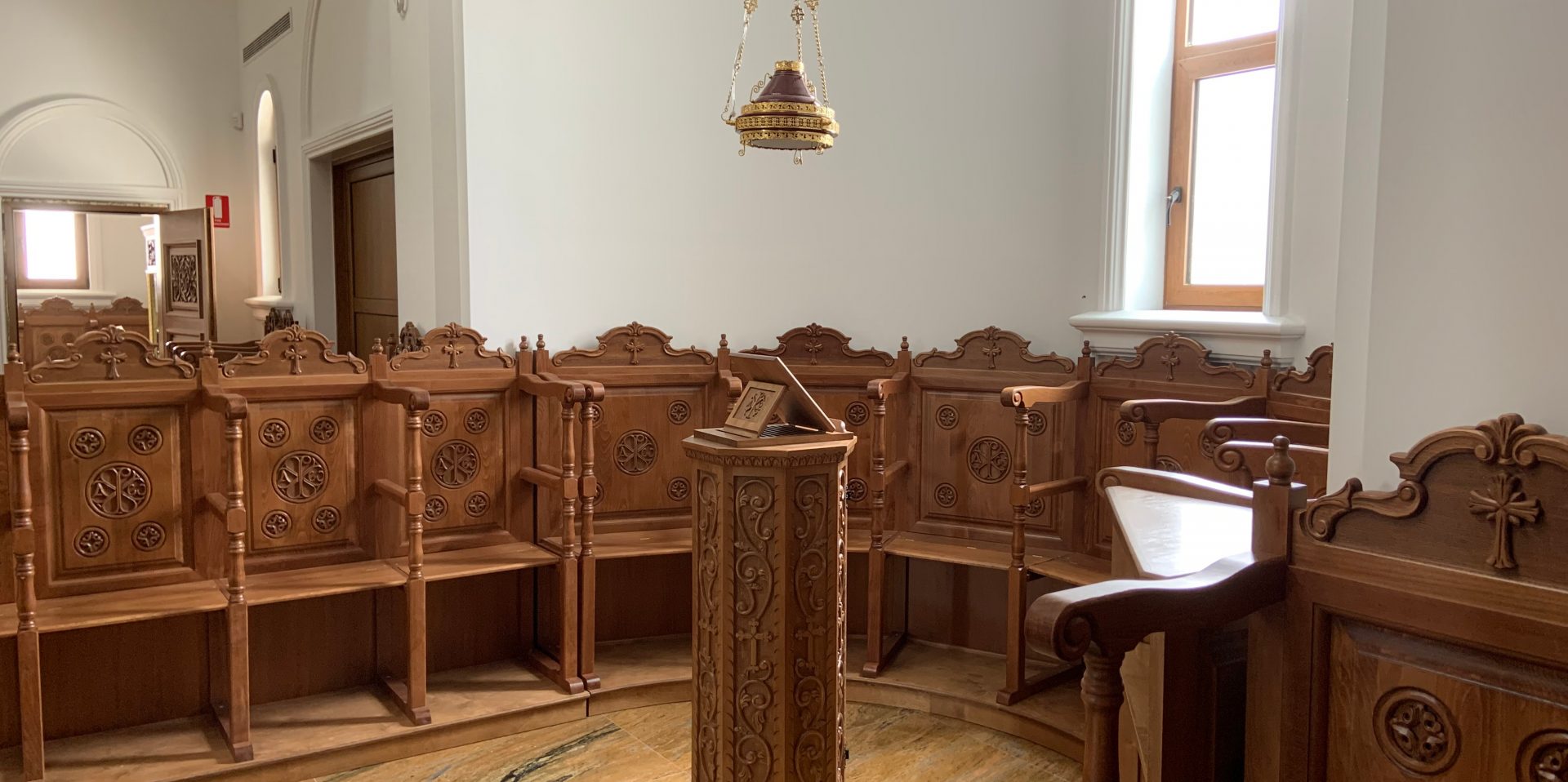Byzantine Choir
Course Outline
History
The Byzantine Choir of Saint John Monastery was established in 2015 by His Grace Bishop Emilianos of Meloa, who at the time was the Abbot of the Holy Monastery of Saint John, Perth, Western Australia. Since its establishment, the Choir is developing with the Grace of God, teaching the traditional Byzantine language of Orthodox chanting according to the style followed in the Simonopetra Monastery of Mt Athos. Since His Grace Bishop Emilianos became the Chancellor of the Greek Orthodox Archdiocese of Australia in 2019, the leadership of the Choir has been taken over by Mr loan Ancuta, who diligently and humbly teaches the members of the Choir the Byzantine language of chanting and prepares them for all upcoming liturgies of the Monastery as well as ecclesiastical events of the Archdiocese in Perth. The Choir is now accepting new students. For more information, please contact the Abbot of Saint John Monastery, Fr Makarios atfrmakarios@stjohnmonastery.com.au.
Byzantine Chanting
The hymns that are sung (chanted) in the Orthodox Church have been to this day a priceless treasure. They are poems which have been written by inspired writers, which have amassed over many centuries and are to be found in the liturgical books of the Church. With these poems, the hymn-writer (and by extension whoever sings them) expresses his feelings, tries to speak to God and opening his heart gives thanks, glorifies and asks things from God.

Every hymn is a prayer to God. Some hymns contain teachings of our Faith taken from the Holy Bible, apocryphal sources and as taught by the Fathers of the Church at the Ecumenical Councils. In the early years, the Christians did not have their own hymns in their meetings, but they were using the psalms of David and other improvised prayers. The first Christian hymns were written in the second century AD. Hymn writing reached a peak from the fifth to the seventh century at the hands of several great melodists or hymnographers. Melodists are those who wrote both the hymns and the accompanying music. Hymnographers however, are those who wrote hymns that matched with music or tunes already familiar to the faithful. Most of the hymn-writers are also Saints, such as Saint Romanos the Melodist, Saint John of Damascus (who also wrote the basic principles of this psaltic art), and Theodore the Studite.
The hymns cannot show their deep beauty and their spiritual content without music. They were written to be sung. Church music complemented and decorated Church worship. During the first Christian centuries, the melodies were very simple. Later, with the development of hymnology, the melody improved. This music ultimately acquired the name Byzantine Music because it was shaped and developed during the Byzantine Period. The roots of Byzantine Music reach back to ancient Greek music. In fact, there are certain ancient manuscripts which have early Christian hymns topped with ancient Greek musical notation. Influences from Judaic and Syriac music were also blended in and the Byzantines take the credit for developing the music with a systematic musical notation.
The music of our Church has always been exclusively a capella. It does not use musical instruments, because it is considered that the human voice is the most appropriate instrument to praise God. Furthermore, the music is monophonic; that is, the faithful chant to God with one voice, along one and the same melodic line. Orthodox Church melody seeks to create a contrite atmosphere. The Greek word here is katanyxis, which literally means being pricked at the heart. Its aim is more so to help the faithful to understand the deeper content of the hymns, and participate spiritually, rather than providing a form of entertainment.
Byzantine music has its own musical notation. The seven notes of the basic scale are derived from the first seven letters of the Greek alphabet. There are eight ways of expression which are called modes. The first, second, third, and fourth modes; and the first plagal, second plagal, grave and fourth plagal modes. The modes have different base notes, different combination of notes (scales), different colour or feel. Interestingly, most modes have a flexibility in their scales which has notes moving from their normal positions according to ascent or descent or proximity to a dominant note.
Originally, the hymns were chanted by all the faithful in one accord because they were simple. Eventually, with the development and embellishment of the music, practicality forced the music into specialised and trained hands – those of the psaltes (chanters), who very often today have small choirs formed around them.
Rev. Gerasimos Koutsouras, Parish Priest of St. George-Rosebay (NSW)
(Excerpt from Greek Orthodox Archdiocese of Australia)
